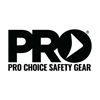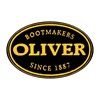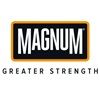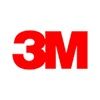Height Safety Principles
Before planning or working at heights consult regulations and standards that are relevant. Important documents should include at least the two following:
MANAGING THE RISK OF FALLS AT WORKPLACES Code of Practice march 2015 (National Regulations available at Safe Work Australia)
AS/NZS 1891 is the National Standard for Australia and New Zealand for “Industrial fall arrest systems and devices”
The Standard is currently divided into 4 parts:
1891.1 Part 1: Harnesses and ancillary equipment
1891.2 Part 2: Horizontal lifeline and rail systems
1891.2 Supplement 1: Horizontal lifeline and rail systems Prescribed configurations for horizontal lifelines
1891.3 Part 3: Fall-arrest devices
1891.4 Part 4: Selection, use and maintenance
FALL PROTECTION DEFINITIONS
FALL ARREST A system whereby a person is safely arrested from a fall by means of personal protective equipment attached to an anchorage point. The maximum free fall allowable is 2 metres.

RESTRAINT A system where a person is attached in a method that a fall cannot occur. Equipment being used for restraint should be fall arrest rated. Working with fall arrest rated equipment in a restraint manner is best practice.

WORK POSITIONING A system which enables a person to work supported in suspension by the use of personal protective equipment in such a way that a fall is partially restrained.

FALL CLEARANCES The system must be set up in such a way so the worker will avoid striking a lower level surface or obstacle, and be maintained in a position post fall, to ensure an easy and quick rescue. Each type of fall arrest device will have its own clearance requirements.

Before undertaking any work at height or confined space entry, a risk assessment program should be developed. Refer to the Australian Standards hierarchy of control in AS/NZS 1891.4 when developing this program, as well as your local government regulatory authority.
Here’s an outline of the controls:
• Identify all of the immediate and potential hazards.
• Eliminate hazards if possible.
• If the hazard can not be eliminated, change your working method to avoid exposure to the risk.
• If exposure to the risk can not be avoided, use engineering controls to contain or minimise the hazard.
• Fall protection equipment should be provided to prevent a fall, or reduce the severity and/or injury in the event of a fall.
Do the research before undertaking any work, give us a call and we can help you through it.
MANAGING THE RISK OF FALLS AT WORKPLACES Code of Practice march 2015 (National Regulations available at Safe Work Australia)
AS/NZS 1891 is the National Standard for Australia and New Zealand for “Industrial fall arrest systems and devices”
The Standard is currently divided into 4 parts:
1891.1 Part 1: Harnesses and ancillary equipment
1891.2 Part 2: Horizontal lifeline and rail systems
1891.2 Supplement 1: Horizontal lifeline and rail systems Prescribed configurations for horizontal lifelines
1891.3 Part 3: Fall-arrest devices
1891.4 Part 4: Selection, use and maintenance
FALL PROTECTION DEFINITIONS
FALL ARREST A system whereby a person is safely arrested from a fall by means of personal protective equipment attached to an anchorage point. The maximum free fall allowable is 2 metres.

RESTRAINT A system where a person is attached in a method that a fall cannot occur. Equipment being used for restraint should be fall arrest rated. Working with fall arrest rated equipment in a restraint manner is best practice.

WORK POSITIONING A system which enables a person to work supported in suspension by the use of personal protective equipment in such a way that a fall is partially restrained.

FALL CLEARANCES The system must be set up in such a way so the worker will avoid striking a lower level surface or obstacle, and be maintained in a position post fall, to ensure an easy and quick rescue. Each type of fall arrest device will have its own clearance requirements.

Before undertaking any work at height or confined space entry, a risk assessment program should be developed. Refer to the Australian Standards hierarchy of control in AS/NZS 1891.4 when developing this program, as well as your local government regulatory authority.
Here’s an outline of the controls:
• Identify all of the immediate and potential hazards.
• Eliminate hazards if possible.
• If the hazard can not be eliminated, change your working method to avoid exposure to the risk.
• If exposure to the risk can not be avoided, use engineering controls to contain or minimise the hazard.
• Fall protection equipment should be provided to prevent a fall, or reduce the severity and/or injury in the event of a fall.
Do the research before undertaking any work, give us a call and we can help you through it.












